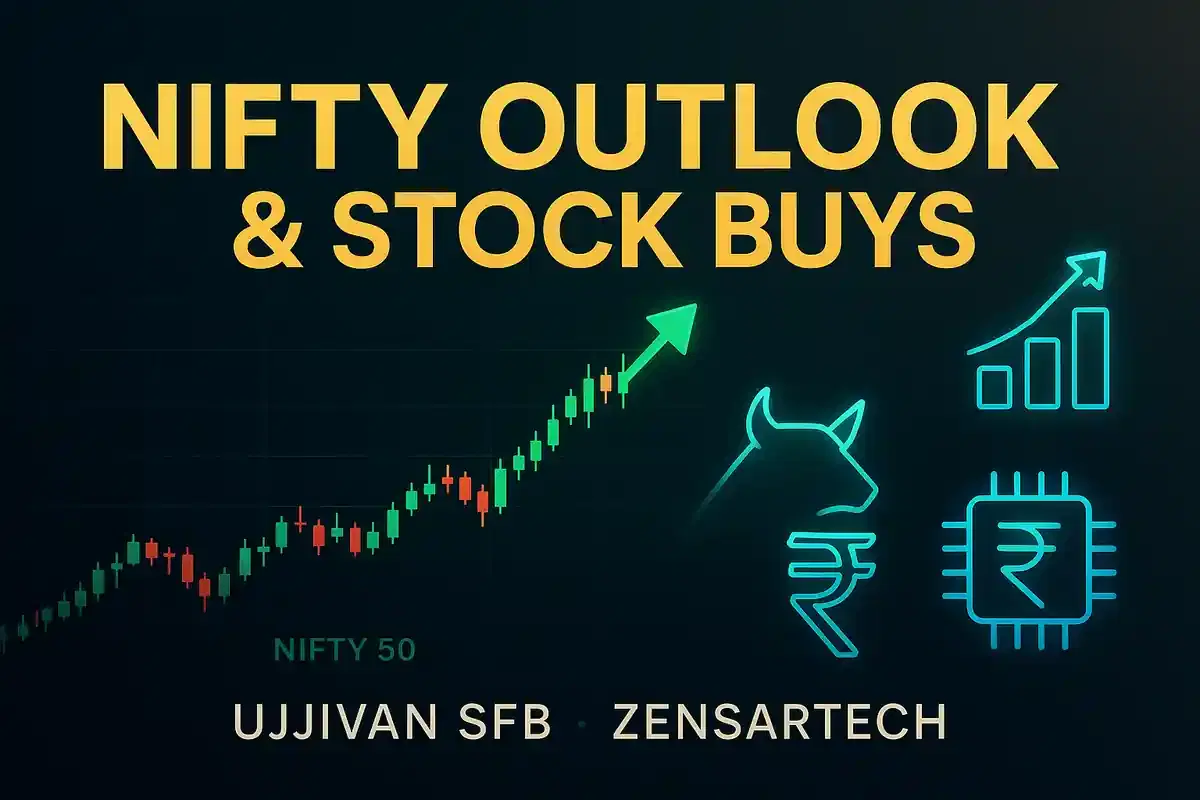Nifty Consolidates Near 26,000, Analysts Suggest Buys in Ujjivan SFB and ZensarTech
Brokerage Reports
|
29th October 2025, 2:12 AM

▶
Stocks Mentioned :
Short Description :
Detailed Coverage :
The Indian stock market's Nifty index showed a volatile performance on a derivative expiry day, ultimately closing with a minor loss of 29 points at 25,936. The index is currently consolidating within the 25,700-26,100 range, and a decisive move beyond this band is expected to provide further market direction. Analysts note that with the Nifty trading above all key moving averages, there is a higher probability of an upward breakout.
In addition to the market view, specific stock recommendations have been made. Ujjivan Small Finance Bank is recommended for purchase with a target price of ₹59 and a stop-loss of ₹50. This recommendation is based on the stock breaking out from a downward sloping trend line on its monthly chart, supported by increased trading volumes. The analyst also highlights the outperformance of the Small Banks and NBFC sector, which is expected to continue.
Zensar Technologies has also received a buy recommendation with a target of ₹860 and a stop-loss of ₹770. The stock has formed a bullish hammer candlestick pattern on the weekly chart and found support at its 200-day Exponential Moving Average (DEMA), leading to a reversal of its trend on the upside. It is also trading above all key moving averages, indicating a bullish trend across all time frames.
Impact: This news is highly relevant for Indian stock market investors as it provides insights into the market's near-term direction and offers specific investment opportunities in fundamentally sound, technically poised stocks. The recommendations could influence trading decisions and stock performance for Ujjivan Small Finance Bank and Zensar Technologies. Impact rating: 7/10. Heading: Difficult Terms Derivative expiry: The date when futures and options contracts must be settled or exercised, often leading to increased market volatility. Consolidating: When a stock or index trades within a narrow price range without a clear upward or downward trend, indicating indecision in the market. Moving averages: Technical indicators that smooth out price data by creating a constantly updated average price, used to identify trends and potential support/resistance levels. Trend line: A line drawn on a stock chart connecting a series of prices that indicate support or resistance levels. A downward sloping trend line suggests a declining price trend. Breakout: When a stock's price moves significantly above a resistance level or below a support level, indicating a potential start of a new, strong trend. Volumes: The total number of shares traded in a security during a specified period. A jump in volume accompanying a price move often confirms the strength of that move. Indicators and oscillators: Technical tools used to predict future price movements based on past price and volume data, helping traders gauge momentum and overbought/oversold conditions. Bullish hammer candlestick pattern: A chart pattern resembling a hammer, typically occurring after a downtrend, which suggests a potential reversal to the upside. 200 DEMA (200-day Exponential Moving Average): A widely followed technical indicator representing the average closing price of a stock over the last 200 days, with more weight given to recent prices. It often serves as a long-term support or resistance level.